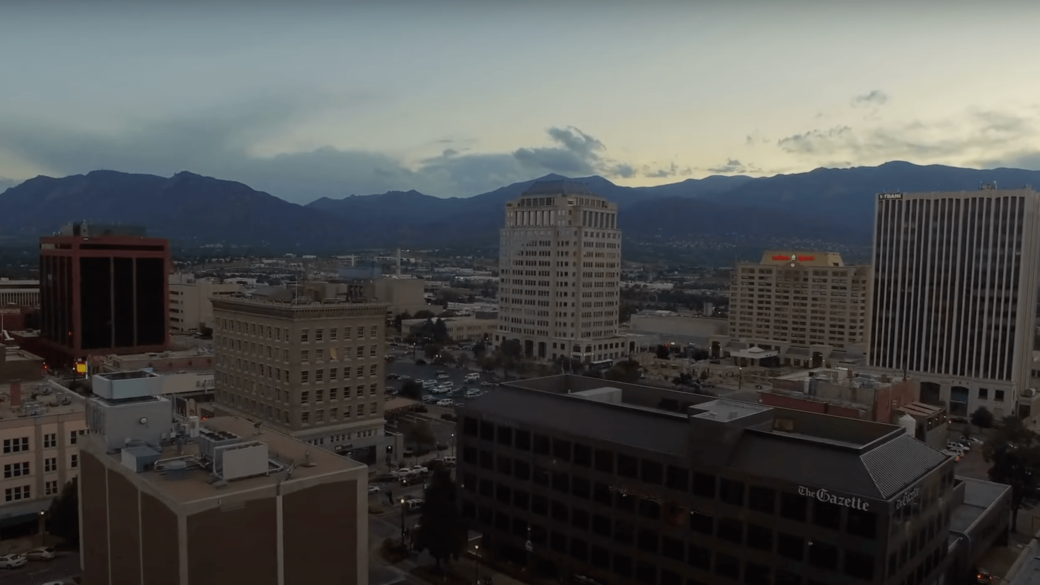Reasons Not to Move to Colorado Springs
Colorado Springs garners praise for its breathtaking natural landscapes, the presence of military installations, and the iconic Pikes Peak. Yet, as with any urban center, it possesses a number of flaws. If you’re contemplating a relocation to this city, it’s crucial to carefully consider both its advantages and disadvantages.
Below, we explore 15 reasons not to move to Colorado Springs as it may not align with everyone’s preferences.
15. High Altitude Concerns
Colorado Springs has a high elevation of over 6,000 feet. For visitors to the area, this occasionally causes altitude-related discomfort, which frequently includes symptoms like headaches, nausea, and fatigue. Adjusting to this elevation can take several weeks, and for some, even months. Furthermore, individuals with respiratory concerns or specific medical conditions may encounter heightened health challenges due to the altitude.
For instance, those with asthma might experience increased difficulty breathing and may need to use their inhalers more frequently.
14. Expensive Housing Market
Colorado Springs housing prices have risen significantly in recent years. The influx of newcomers to the region has created a situation where demand has surpassed the available supply, resulting in elevated home prices and rental rates. As an illustration, a family in search of a three-bedroom house may discover themselves shelling out significantly more than they would in comparably sized cities. A cheaper place to live in Colorado is Costilla County.
13. Water Restrictions
Colorado Springs frequently contends with drought conditions, resulting in stringent water conservation measures. These restrictions include various activities such as lawn irrigation, car washing, and even the filling of swimming pools. For individuals who value flourishing gardens or take pleasure in home-based outdoor water pastimes, these limitations can pose a notable inconvenience.
12. Limited Cultural Scene
This is also a reason not to move to Tulsa. While Colorado Springs does offer some cultural attractions, it may not measure up to larger cities in terms of its arts and entertainment scene. People looking for a lively theater scene, a wide range of music festivals, or a lot of museums might feel like they do not have many options here.
For instance, someone accustomed to the vibrant cultural scenes of bustling cities like New York or Los Angeles might find Colorado Springs’ cultural offerings to be somewhat limited.
11. Traffic and Infrastructure
With the city’s continuous growth, traffic congestion has become an increasingly prominent issue in Colorado Springs. Numerous roads and highways experience frequent gridlock, particularly during rush hours.
The expansion of infrastructure often struggles to keep pace with the city’s development, resulting in traffic bottlenecks and frustrating delays. A daily commute that should typically take 20 minutes can easily stretch to double that duration during peak traffic times.
10. Tourist Crowds
Colorado Springs attracts many tourists, which boosts the local economy but also presents challenges. Iconic destinations like the Garden of the Gods, Pikes Peak, and the U.S. Air Force Academy annually beckon millions of visitors. This surge in tourism can result in overcrowded parks, trails, and recreational areas, particularly during the summer season. For residents, this translates to navigating congested roads, enduring extended wait times at local eateries, and occasionally facing limited access to their cherished spots.
Imagine planning a serene weekend hike, only to encounter throngs of visitors on the trail, or desiring a meal at your beloved local restaurant, only to be deterred by an hour-long wait.
If you’re not a people person, the large amount of tourists is one of the main reasons not to move to Colorado Springs.
9. Wildfire Risks
The threat of wildfires in Colorado Springs is a very real and tangible concern. The city and the areas around it have dry climates and lots of vegetation, which makes the area very prone to wildfires. Residents must maintain constant vigilance, particularly during the dry seasons. The impact of wildfires, exemplified by the devastating Waldo Canyon Fire, leaves a lasting mark on the community.
These events result not only in property loss but also affect air quality and can disrupt daily life for weeks or even months. Additionally, residing in areas prone to wildfires may entail higher insurance premiums, contributing to the overall cost of living.
8. Military Presence
Colorado Springs is proud of military camps such as Fort Carson, Peterson Air Force Base, and the Air Force Academy. These institutions are important to the city’s identity and economy, but they also present unique challenges. Residents often grapple with the sounds of military aircraft, occasional drills, and road closures due to military parades or events.
Additionally, the transient nature of military personnel can result in frequent changes within neighborhoods, making it challenging for long-term community bonds to develop. For individuals without military affiliations, this dynamic can sometimes feel overwhelming or intrusive.
7. Fluctuating Weather
Colorado Springs’ weather often feels like a roller-coaster ride. While it’s true that residents get to enjoy a diverse range of weather patterns, this unpredictability can pose concerns. It’s not uncommon for a pleasant, sunny morning to swiftly transform into an afternoon snowstorm, especially during the transitional seasons.
Consequently, residents need to stay prepared for anything, whether it’s ensuring their vehicles are ready for sudden snowfall or maintaining a versatile wardrobe. These rapid weather changes can also disrupt outdoor plans, making advance planning difficult.
6. Limited Nightlife
While Colorado Springs offers a tranquil ambiance with its breathtaking natural surroundings, it may not quite measure up to the bustling nightlife found in larger cities. The city has a selection of bars, restaurants, and entertainment venues, but the offerings remain somewhat restricted. For young professionals or individuals accustomed to a more diverse nightlife scene, this can be perceived as a drawback.
Colorado Springs tends to quiet down early, and late-night entertainment options can be scarce. Consequently, residents often find themselves travelling to nearby Denver or other cities when seeking a more varied nightlife experience.
5. Education Concerns
Education stands as a cornerstone for any flourishing community, and while Colorado Springs is home to several esteemed schools, the overarching education system faces its own set of problems. Financial constraints have resulted in larger class sizes in certain schools, a reduction in extracurricular activities, and sporadic teacher shortages. Colorado Springs isn’t the only place with Education problems, as the state Utah has a low public school per pupil ratio due to under-funding.
Parents may find themselves grappling with these issues, advocating for improved resources, or contemplating private schooling alternatives to secure a high-quality education for their children.
4. Economic Dependence on Military and Defense
Colorado Springs relies significantly on the military and defense industries to sustain its economy. This brings a sense of stability but also ties the city’s economic well-being to federal defense budgets.
During government cutbacks or shutdowns, this link can lead to fewer jobs, less spending, and a general slowdown in the economy. To enhance resilience against these fluctuations, it’s essential to explore options for diversifying the city’s economic foundation.
3. Growing Pains
The rapid influx of newcomers poses its own set of difficulties, and Colorado Springs is no exception. With the surge in population, the city confronts issues such as urban sprawl, escalating traffic congestion, and added pressure on public services.
Residents’ quality of life can be affected by having to take longer commutes and endure limited city services. Due to this expansion, the city’s infrastructure sometimes suffers, which can frustrate longtime residents.
2. Outdoor Lifestyle Isn’t for Everyone
While Colorado Springs serves as a paradise for outdoor enthusiasts, individuals with different interests might occasionally feel somewhat disconnected. The city’s culture and recreational activities are deeply rooted in its natural assets. For those who appreciate urban amenities such as theaters, shopping malls, and museums, the city’s offerings might appear somewhat limited by comparison.
1. Rising Cost of Living
The ever-increasing cost of living in Colorado Springs is at the top of this list of reasons not to move to Colorado Springs. As the city grows, residents face financial strain. Housing prices have seen a remarkable surge, and day-to-day expenses, encompassing groceries and utilities, are on a continuous upward trajectory.
This can be difficult for families and individuals with fixed incomes. The city’s appeal and limited housing inventory have created a fiercely competitive real estate market, making affordable housing harder to find. If this trend remains unaddressed, it could potentially reshape the very essence of the community, rendering it less accessible for those who have long called it home.
Conclusion
In summary, Colorado Springs undoubtedly has its merits, but it’s crucial to take these factors into account when contemplating a relocation. Each city comes with its own unique setbacks, and what suits one individual may not align with another’s preferences.
The prudent approach involves visiting, conducting comprehensive research, and carefully evaluating the advantages and disadvantages before arriving at a decision.


